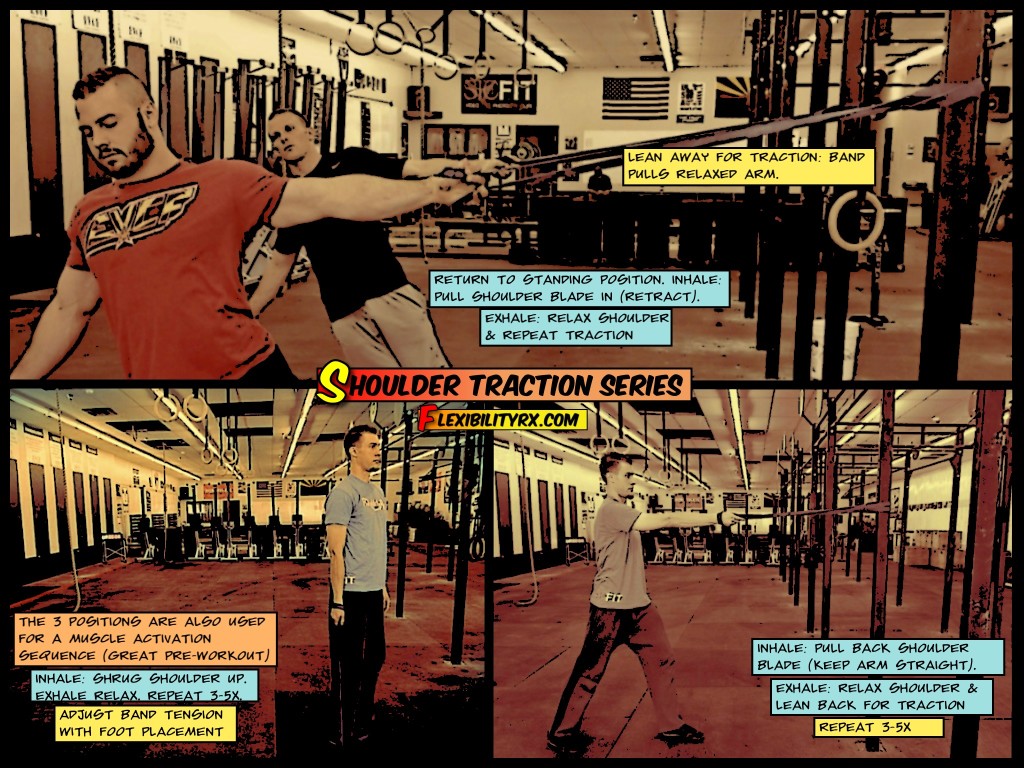Improving Shoulder Flexibility
This traction sequence for the shoulder will help improve shoulder mobility. The three positions used target the glenohumeral joint at different angles.
Traction decompresses the joint-capsule which itself is often adhered restricting range of motion. While the goal here is to isolate the shoulder joint as much as possible, a subtle stretch is also applied to the muscles surrounding the shoulder blade. Rotate the arm in and out to find the ‘sweet-spot’ – the stuck spot in the shoulder joint.
Traction Down
The first position applies band traction to the shoulder straight down at a neutral position. By stepping on the band a downward pull on the shoulder joint is applied. This position also applies a subtle stretch to levator scapula by depressing the shoulder blade away from the neck.
The first position applies band traction to the shoulder straight down at a neutral position. By stepping on the band a downward pull on the shoulder joint is applied. This position also applies a subtle stretch to levator scapula by depressing the shoulder blade away from the neck.
Traction Front
The second position applies traction at a front angle, also adducting the scapula away from the spine. This applies a subtle stretch to the rhomboids in back – between the scapula and the spine.
The second position applies traction at a front angle, also adducting the scapula away from the spine. This applies a subtle stretch to the rhomboids in back – between the scapula and the spine.
Traction Side
The third position applies traction at a side angle (top photo) taking the arm out to the side.
The third position applies traction at a side angle (top photo) taking the arm out to the side.
Muscle Activation Sequence
All three positions allow for activation of the muscles surrounding the shoulder blade, the activation consists of a stretching technique called PNF. PNF involves a 3-5 second contraction followed by a relaxation. The stretch is deepened on the relaxation slightly. Activating the muscles surrounding the shoulder blade along with a gentle traction is a great way to prepare the shoulders pre-workout.
All three positions allow for activation of the muscles surrounding the shoulder blade, the activation consists of a stretching technique called PNF. PNF involves a 3-5 second contraction followed by a relaxation. The stretch is deepened on the relaxation slightly. Activating the muscles surrounding the shoulder blade along with a gentle traction is a great way to prepare the shoulders pre-workout.
This is a great sequence to improve shoulder flexibility for overhead lifts like the overhead squat and snatch.
- Kevin Kula, “The Flexibility Coach” – Creator of FlexibilityRx™

Комментариев нет:
Отправить комментарий